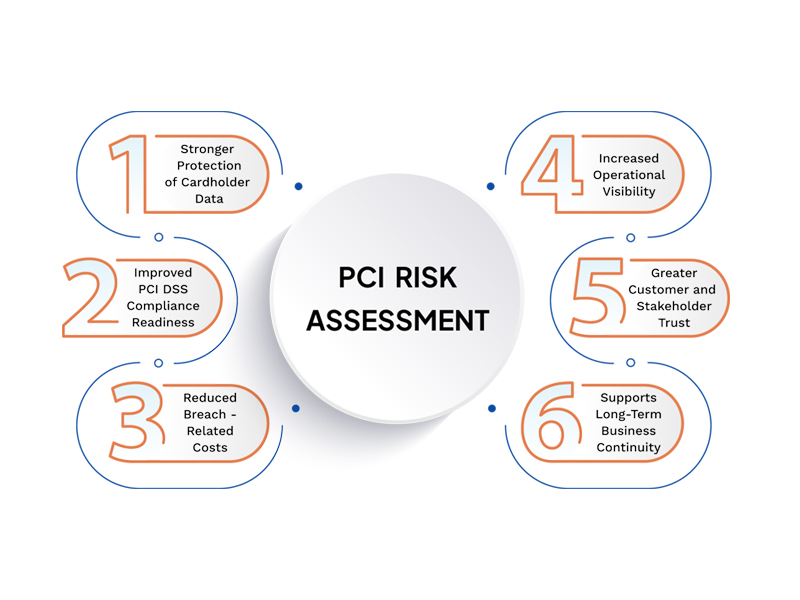PCI Risk Assessment
As online transactions increase their reach and penetration throughout the world today, hackers are perpetually working towards breaching a company’s security measures to protect its assets and that of its customers. To ensure the safety of people from such serious and persistent threats, strict measures should be taken. Hence, it becomes the responsibility of the leaders and managers of the companies to comprehend their current standing, identify the exposure points and manage any security risks so as to protect themselves from harm. SISA offers three services under its Risk Assessment portfolio, all of which are invaluable in helping organizations bolster their security measures against invasive threats:
What is PCI Risk Assessment?

What Are The Requirements for PCI Risk Assessment?
These are the mandatory requirements to be met with PCI DSS standard
It should identify any vulnerabilities and threats to both primary and secondary critical assets
The Assessment inventory should cover all payment channels including all the assets which can directly or indirectly impact the security of CDE.
What We Do?
We provide a two-day Information Security Risk Assessment Workshop, to impart knowledge regarding the security measures, based on the following distinguished methodologies- NIST, OCTAVE, ISO 27005
We find and resolve the liabilities across business applications, databases, and networks
How We Work?
This is the protocol we follow
Half-a-day awareness session: The main objective here is to create awareness among the users regarding the gravity of PCI DSS compliance.
PCI DSS Risk Assessment: Next, we conduct PCI Risk Assessment to identify the various points of exposure within the framework and the unique risks which can impact the confidentiality of a cardholder.
PCI DSS Gap Assessment: Then we identify the gaps and loopholes in the infrastructure with respect to PCI DSS 3.2 through PCI DSS Gap Assessment.
What is Facilitated Risk Assessment?
Facilitated Risk assessment is a service offered by Secureknot to help organizations perform Risk Assessment.
Facilitated RA will enable organizations to identify the assets and associated risks
It is an organized way to create and manage all the risk assessments
- Risk Avoidance
- Risk Transfer
- Risk Treatment
- Risk Termination
FAQ's
What is Breach Risk Assessment?
Breach Risk Assessment is a proactive risk assessment as opposed to a self-check activity performed considering breaches which happened in a similar industry in the past. In this assessment, we take knowledge from our payment forensic learnings and build risk scenarios based on past breaches. The intention behind Breach Risk Scenario is to take a proactive step towards analyzing and protecting the organization.
Why Should Secureknot Be Your Choice?
Secureknot has been an integral part of this process right from its inception. The topic of risk assessment in SIG (Special Interest Group) was proposed by Secureknot’s CEO, Seema abdul. We were pioneers in launching the PCI Risk Assessment tool which helped more than a hundred organizations- worldwide- to decrease their risk assessment effort and time by automating PCI risk management procedure. Secureknot has built-in standard data to identify threats, vulnerabilities, and risks that could come up in any individual scenario. Secureknot helps you in automating Risk Assessment activation which will reduce your cost and efforts up to 80%. Having worked in this field for well over a decade now, we have a vast knowledge and deep understanding of the business risks associated with a card environment.
